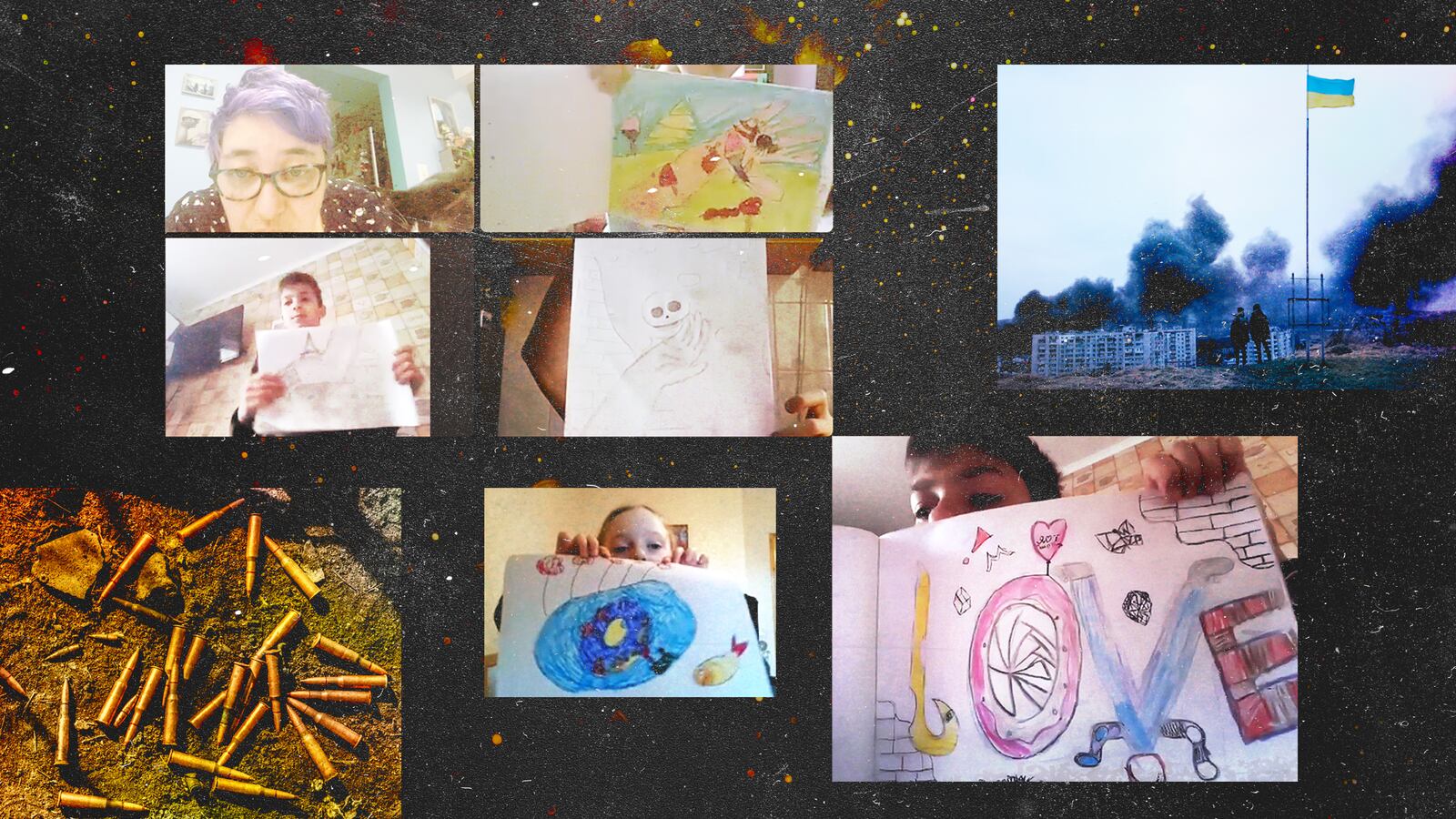From Ukraine, 4-year-old Bronco offered a child’s view of the situation there to the teacher of his Zoom art class.
“Ah, you know war is not a problem,” he said. “The problem is the stores are closed and there’s no candy left.”
“Yes, that’s a serious problem, “ 51-year-old Ksenya Litvak replied from Washington, D.C., where she has been running virtual classes for Ukrainian kids as young as 3 since Russia invaded her native country.
In recounting this exchange to The Daily Beast, Litvak added that Bronco is an aspiring inventor who draws fantastic machines capable of dealing with a host of problems.
“He told me that [the] machines are supposed to do everything, like help mom clean, make ice cream for everybody,” Litvak recalled.
Another student, 8-year-old Alysa, made Litvak wish the actual problem really was no bigger than a shortage of sweets.
“Maybe it was three weeks into war that she told me, tremblingly, ‘Do you know that we have been attacked and actually there is a war and they’re bombing us all the time?’” Litvak recalled.
But at another moment, Alysa was able to escape into drawing her favorite creatures.
“Her drawing will be cats,” Litvak said. “Doesn’t matter what we’re doing, cats will be somewhere.”
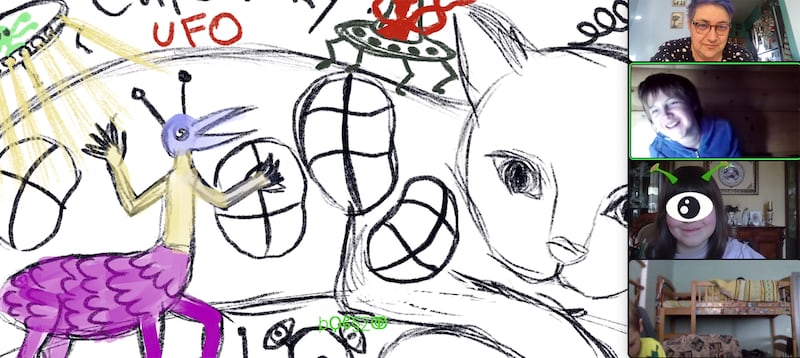
Litvak continually tries to divert the kids’ imaginations from the fighting.
“OK, we’re drawing in Africa,” she recalled telling the class one day.
“How can I draw a burning airplane?” a student inquired.
“What does burning airplane have to do with Africa?” Litvak asked.
“Just, you know, just burning airplane is flying to Africa,” the student replied.
“OK, we’ll show you how to draw burning airplane,” Litvak told him. “But let’s do giraffe [too].”
Warnings of attacks by actual airplanes periodically interrupted the classes.
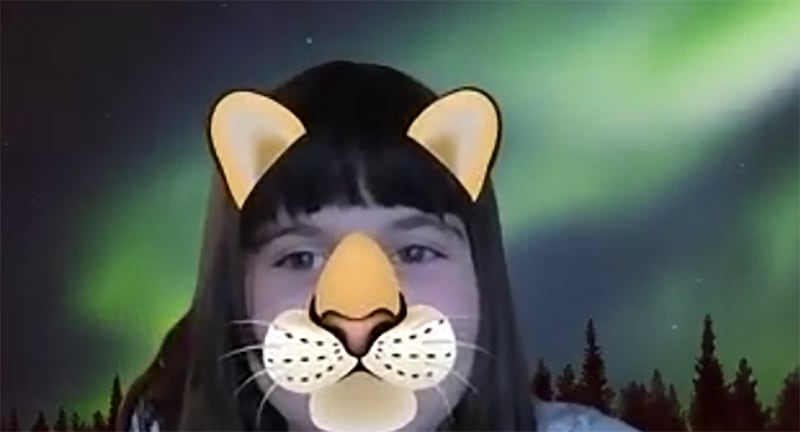
“They could disappear from [a] lesson saying, ‘Yeah, sorry, we need to go. Airstrike. We need to go downstairs to the basement,’” Litvak reported.
One student, 11-year-old Timur—whom Litvak says is particularly talented and has a passion for music as well as art—announced that he was just going to ignore an airstrike and stay in class.
“He said, ‘It’s so many airstrikes, I will stay,’” Litvak recalled. “I said, ‘No, you need to go to the basement.’ He said, ‘No, parents are not here, I’ll stay.’”
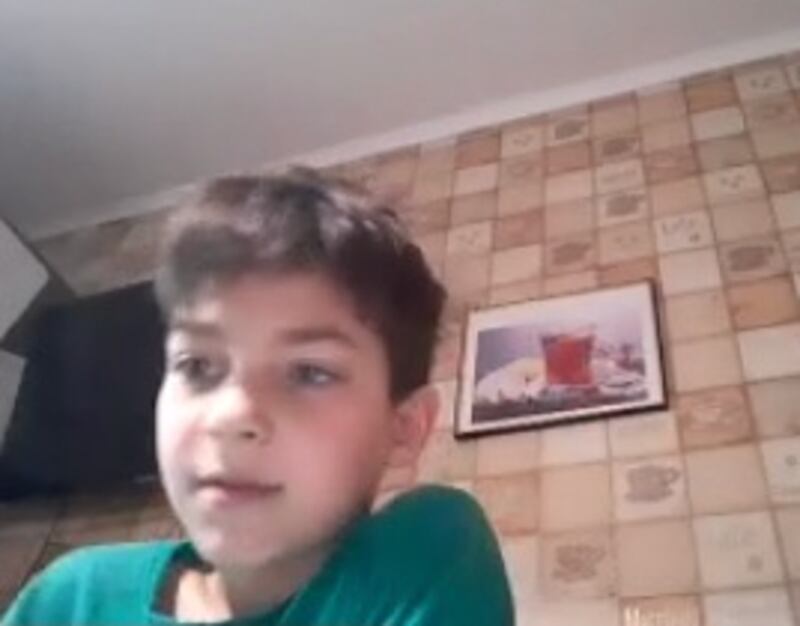
Litvak spent her own childhood in Odesa. She attended university in St. Petersburg and married a fourth-generation resident of that Russian city. The ascent of Vladimir Putin so alarmed her and her husband, Misha Kachman, that they emigrated to America in 1999.
”When Putin came to power, I understood immediately it’s time to run,” she told The Daily Beast.
Litvak was teaching art at a suburban school outside of Washington, D.C., and a private studio she established for young artists when Putin attacked Ukraine. He had proven to be even more evil than she feared.
“From the moment the war start, I really can’t believe this happened and I can’t sleep,” she recalled. “Unfortunately I do not have this feeling that many people have this will end soon. I’m afraid this will drag on for years.”
She was filled with a desperate desire to do something, anything.
“During the COVID time I was teaching Zoom,” she told The Daily Beast. “And so I already learned how to do it.”
She created a web page with the hope of providing art and life to Ukrainian children who had suddenly been surrounded by destruction and death.
“Just to bring some joy to kids,” she said.
Litvak then learned about an online educational platform created in memory of Yulia Zdanovska, a teacher who had won the silver medal at the 2017 European Girls’ Mathematical Olympiad. Zdanovska, just 21, was killed by a Russian rocket on March 8 while volunteering to assist unarmed civilians in her home city of Kharkiv.
Litvak contacted one of the platform’s organizers, Andreii Nikolaiev. The platform had been focused on mathematics, but he welcomed Litvak’s art classes. She usually has eight students in a class, though sometimes there are as many as 10.
“First couple lessons, they were really quiet and serious kids,” she recalled.
Some of the students at the in-person studio Litvak runs in America got a glimpse of the demeanor of the class in Ukraine.
“They’re listening and they’re sitting for an hour doing what I told them to do,” Litvak said.
But she decided that this was not what the Ukrainian kids really required.
“So as an anecdote, I tried to draw on the screen,” Litvak said.
The kids in Ukraine responded just as she hoped.
“They’re laughing at the screen, laughing and talking one to each other,” she reported. “It’s what they need now. They need playfulness.”
The American kids at her studio, many of whom are of Ukrainian and Russian descent, helped her set the tone by dyeing her hair blue. The Ukrainian kids seemed delighted.
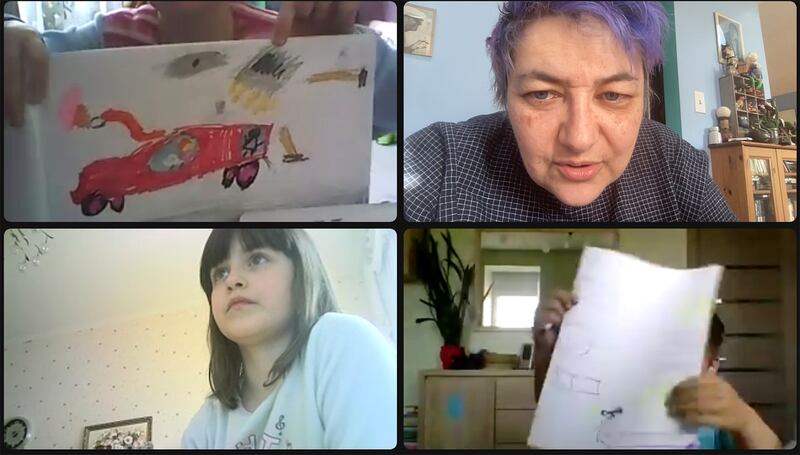
“I think they understand that I’m crazy enough to teach them,” Litvak said.
As they enjoyed badly needed fun, her Zoom kids in a war zone kept making art. She was at first hesitant to post online pictures of them along with their drawings.
“But they like it very much,” she said.
One boy depicted a Ukrainian flag and a soldier, but he and the others were otherwise less likely than American boys to draw guns and depict violence. The Ukrainian boys as well as girls are more liable to escape into fantasy imagining
“They’re really into fantasy world,” Litvak said. “I can tell they don’t want to draw reality right now.”
Their vision tends more towards rainbows than darkness.

“They’re devastated, but they’re not angry,” Litvak said. “I don’t feel hate in them.”
Timur, the 11-year-old so weary of airstrikes that he wanted to keep drawing through one, produced a picture that features an outsized word in English. The four letters of this single syllable are each of a different color. The second is also a spoked wheel. The third is also a man standing on his head with his legs splayed. All together, they spell what Litvak recognizes as the great power of the Ukrainians and the opposite of what propels Putin.
“LOVE”

